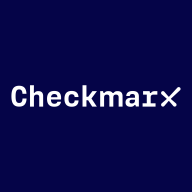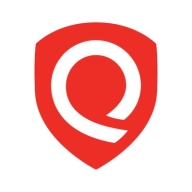

Qualys Web Application Scanning and Checkmarx One both compete in the web application security category. Checkmarx One appears to have an upper hand due to its broad language support and developer-friendly features.
Features: Qualys Web Application Scanning offers Selenium IDE integration, protection against zero-day vulnerabilities, and seamless integration with CI/CD pipelines. It is adept at detecting OWASP Top 10 risks. Checkmarx One provides SAST for uncompiled code, extensive language support, and integrates smoothly with diverse development environments.
Room for Improvement: Qualys Web Application Scanning needs better user guidance for business logic vulnerabilities, enhanced API capabilities, and a simplified UI. Its pricing model also requires reconsideration. Checkmarx One must address false positives, extend language support for dynamic applications, and simplify its pricing structure alongside improving DAST features.
Ease of Deployment and Customer Service: Qualys Web Application Scanning supports flexible cloud deployments, although the UI can be complex, and technical support is occasionally slow. Checkmarx One offers robust on-premises and hybrid cloud deployment, with generally well-received customer service, albeit with room for faster support.
Pricing and ROI: Qualys Web Application Scanning is expensive but yields ROI through reduced scan times and errors. Checkmarx One's pricing is high due to a complex licensing model but offers substantial value with its comprehensive features. Both solutions could benefit from clearer pricing structures.
Once we purchase the license, we have access to top-notch support.
I have dealt with Qualys's technical support, and any enhancements are challenging.
At one point, there was a limitation on reporting for 100,000 assets at a time.
It is licensed for assets, so we just contact the team for additional licenses if needed.
With the growing reliance on AI, Qualys Web Application Scanning should be updated to handle AI-based applications and LLM-based attacks.
One area of improvement is reducing false positives by prioritizing agent findings over remote findings when there is a corresponding local agent finding.
I would like it to be cheaper because it is a bit expensive compared to competitors like Tenable Nessus.
They offer discounts on bulk licenses, making it cheaper compared to competitors like Veracode DAST.
I find it a bit expensive compared to other competitors.
It effectively detects vulnerabilities like the OWASP Top 10 without any issues in reporting.
It is recognized as one of the best tools for web application security from a development perspective.
The product helps by providing options for remediating vulnerabilities it finds, making it really useful.


Checkmarx One is an enterprise cloud-native application security platform focused on providing cross-tool, correlated results to help AppSec and developer teams prioritize where to focus time and resources.
Checkmarx One offers comprehensive application scanning across the SDLC:
Checkmarx One provides everything you need to secure application development from the first line of code through deployment and runtime in the cloud. With an ever-evolving set of AppSec engines, correlation and prioritization features, and AI capabilities, Checkmarx One helps consolidate expanding lists of AppSec tools and make better sense of results. Its capabilities are designed to provide an improved developer experience to build trust with development teams and ensure the success of your AppSec program investment.
Qualys Web Application Scanning (WAS) is a fully cloud-based web application security scanner. The scanner will automatically crawl periodically and test web applications to discover potential vulnerabilities, including cross-site scripting (XSS) and SQL injection. The consistent testing equips the automated service to generate consistent results, lessen false positives, and offer the ability to scale to protect thousands of websites effortlessly.
Qualys Web Application Scanning is bundled with different scanning technology to carefully scan websites for malware infections and will send notifications to website owners to assist in preventing blacklisting and brand reputation damage. As digital transformation takes place in various organizations, Qualys WAS gives organizations the ability to track and document their web app security status through its interactive reporting capabilities.
Qualys WAS empowers organizations to remediate any web application vulnerabilities quickly. Some of the key tools offered are:
Benefits of Qualys Web Application Scanning
Qualys Web Application Scanning offers many benefits, including:
Reviews from Real Users
Qualys Web Application Scanning stands out among its competitors for a variety of reasons. Two of those reasons are its progressive scan and quick detection of vulnerabilities.
P.K., a senior software developer at a tech vendor, writes, "The feature that I have found most valuable is the progressive scan. It is good. It's done in 24 hours."
Nagaraj S., lead cybersecurity engineer at a tech service company, notes, "I have found the detection of vulnerabilities tool thorough with good results and the graphical display output to be wonderful and full of colors. It allows many types of outputs, such as bar and chart previews."
We monitor all Application Security Tools reviews to prevent fraudulent reviews and keep review quality high. We do not post reviews by company employees or direct competitors. We validate each review for authenticity via cross-reference with LinkedIn, and personal follow-up with the reviewer when necessary.